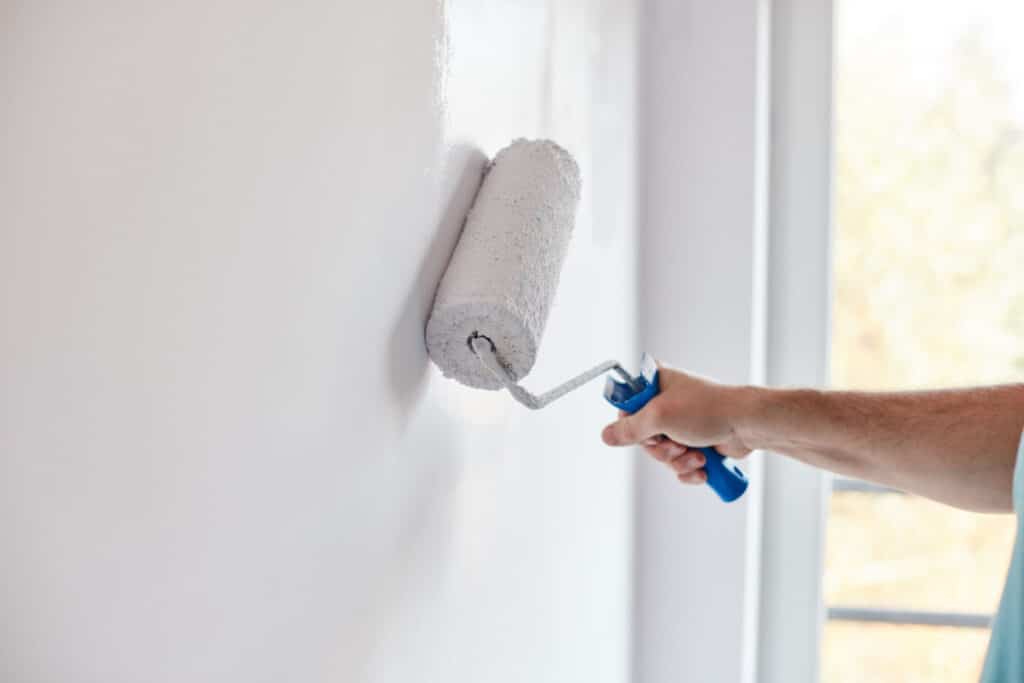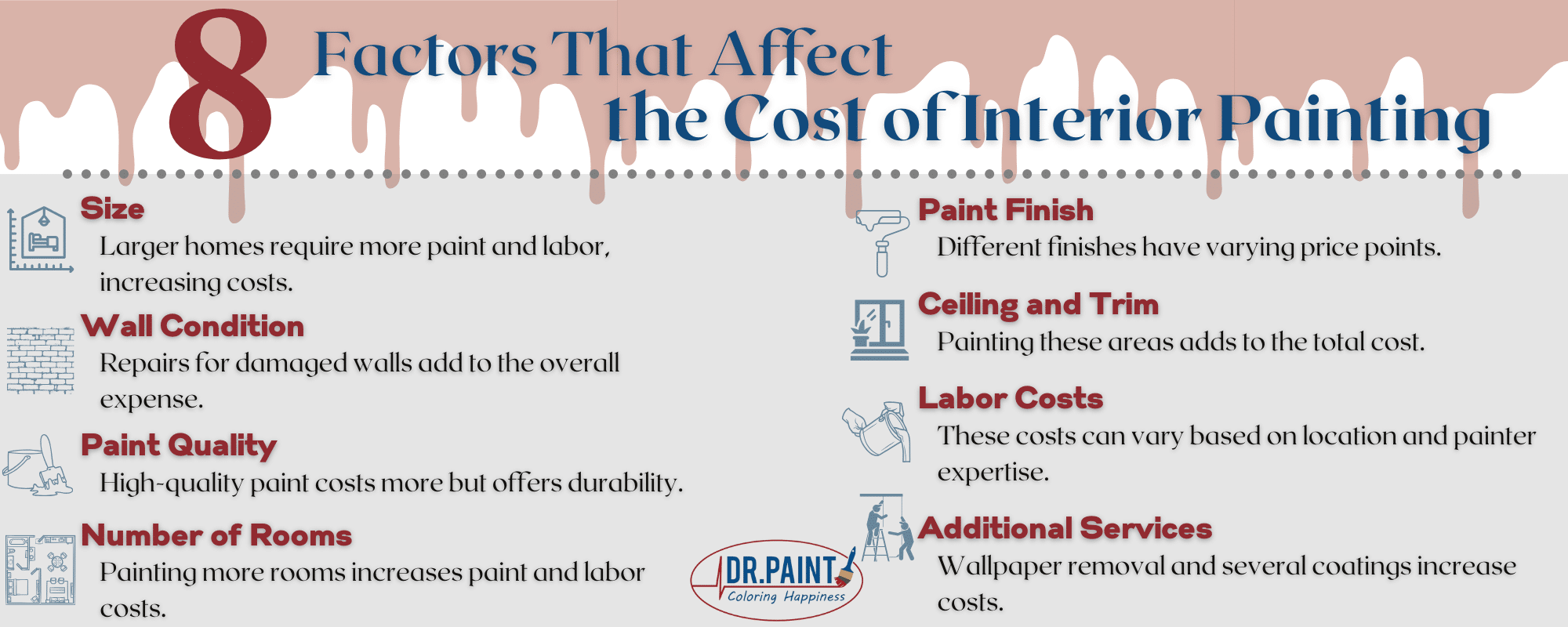
If you’re contemplating giving your home’s interior a fresh look, one of the first questions that might cross your mind is, “How much does it cost to paint my home’s interior?” The answer, however, isn’t as straightforward as you might think. The cost of painting the interior of your home can vary significantly based on a variety of factors. In this blog, we’ll dive into these factors, providing you with a comprehensive understanding of what to expect when budgeting for an interior paint job.

Size Matters
The size of your home is a major determinant of the cost of painting. Naturally, larger homes will require more paint and more labor hours, driving up the overall cost. You can expect to pay more to paint the interior of a spacious, multi-story house compared to a cozy single-story dwelling.
Wall Condition
The condition of your walls plays a pivotal role in cost estimation. If your walls have extensive damage, cracks, or imperfections that need repairs before painting, you’ll incur additional expenses. These repairs may include drywall repair, smoothing out rough surfaces, or addressing water damage.
Paint Quality
The quality of paint you choose directly impacts the cost. High-quality paint is not only more expensive but also offers better durability and a more attractive finish. While it might seem tempting to opt for the cheapest paint available, investing in higher-quality paint can save you money in the long run by reducing the need for frequent touch-ups and repainting.
Number of Rooms
The number of rooms you intend to paint will naturally affect the cost of interior painting. Painting multiple rooms will require more paint, labor, and time. Additionally, rooms with intricate designs or special requirements (e.g., bathrooms with moisture-resistant paint) may cost more to paint.
Paint Finish
The type of paint finish you select can also influence the overall cost. Different finishes, such as flat, satin, semi-gloss, or high-gloss, have varying price points. Semi-gloss and high-gloss paint tend to be more expensive than flat paints due to their durability and ease of cleaning.
Ceiling and Trim
Don’t forget about the ceilings and trim when budgeting for your interior paint project. Many homeowners choose to paint these surfaces along with the walls for a cohesive look. Painting ceilings and trim requires additional time and effort, which will add to the total cost.
Labor Costs
Labor costs can vary based on your location and the expertise of the painters you hire. Highly skilled professional painters may charge more, but their expertise can result in a more flawless finish and potentially save you money on future repaints.
Additional Services
Consider any additional services you might need, such as removing wallpaper or applying special coatings. These services will add to the overall cost of your interior painting project.
DIY vs. Professional
While some homeowners opt to tackle interior painting themselves to save money, it’s essential to weigh the pros and cons. DIY painting can save on labor costs but may require more time and effort, and the quality of the finish may not match that of a professional job.
Get an Accurate Estimate of Interior Painting Costs
Since the cost of painting the interior of your home depends on various factors, request quotes from professional painters to receive an accurate estimate. At Dr. Paint, we will assess your specific needs and design goals before offering a quote so you can know exactly what to expect.
If you’re ready to transform your home’s interior and want a hassle-free, professional paint job, schedule an interior painting service with our experienced team of painters. We are committed to delivering top-notch results, using high-quality materials, and ensuring your satisfaction. We can even help you know how often you should paint your home’s interior for the best appearance!

Recent Comments